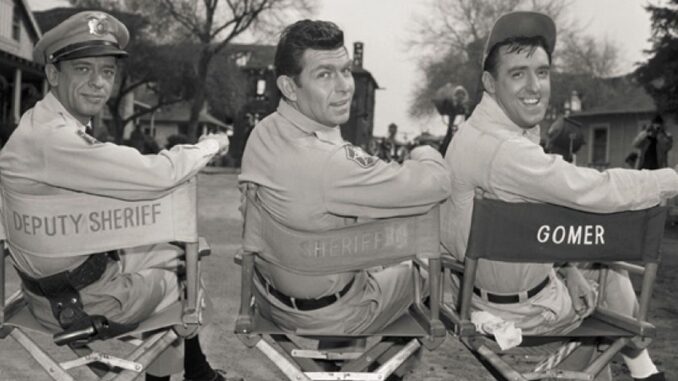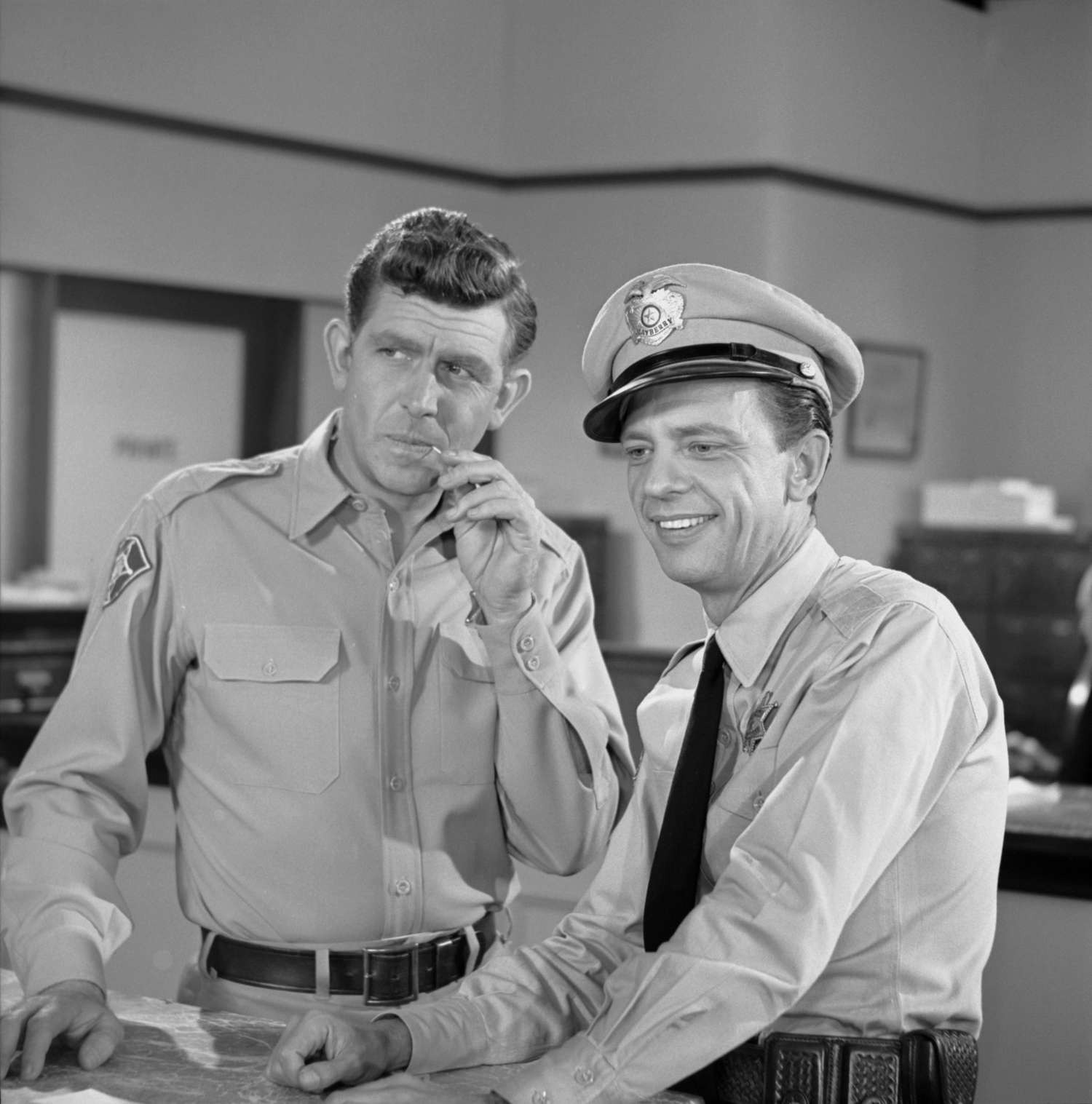
Introduction: A Walk Down Memory Lane With Ron Howard
It’s not every day that a child actor grows up to become one of Hollywood’s most respected directors. But Ron Howard, who portrayed Opie Taylor on The Andy Griffith Show, has never forgotten his roots. In a recent interview, Howard revealed something fans didn’t see coming: a secret reason behind the show’s most iconic scenes. With just one sentence—“I remember vividly”—Howard cracked open a vault of memories that gives new meaning to the small-town charm of Mayberry.
Let’s unpack the hidden creative genius behind the show’s signature moments and explore how Andy Griffith’s vision, the unique environment, and Howard’s own childhood experience crafted a TV masterpiece still loved today.
The Andy Griffith Show — A Classic Like No Other
Why the Show Still Resonates Decades Later
Have you ever watched a show that felt like a warm hug? That’s The Andy Griffith Show. Premiering in 1960, this timeless sitcom offered wholesome storytelling, relatable characters, and a sense of peace often missing in modern entertainment. But what made it so unforgettable?
Ron Howard’s Role in the Magic
As Opie, young Ron Howard captured hearts across America. He wasn’t just acting—he was living a genuine experience on-screen. That authenticity? It wasn’t accidental.
“I Remember Vividly”—Ron Howard’s Confession
The Moment of Revelation
Ron Howard recently sat down for a retrospective look at the show. When asked what made The Andy Griffith Show so magical, he said, “I remember vividly how Andy created an environment where things felt real—like I wasn’t acting at all.” That single statement explains the show’s unmatched sincerity.
Authenticity Over Acting
Howard admitted that Andy Griffith avoided heavy-handed scripts or over-directed performances. Instead, Griffith wanted spontaneity and truth—even from a child actor. That meant fewer rehearsals and more trust.

How Andy Griffith Created a ‘Safe Space’ for Performance
Natural Interactions Were Encouraged
Griffith’s approach was unique. He often let scenes evolve naturally, especially between him and Opie. There were moments where unscripted lines made the final cut because they felt real.
Breaking the Fourth Wall—Emotionally
Rather than talking directly to the audience, the show emotionally reached through the screen. Griffith’s goal? Make the audience feel like they were in Mayberry. That meant fewer big jokes and more quiet, sincere moments.
Behind the Camera—The Quiet Genius of Andy Griffith
Intuition Over Instruction
Griffith trusted his co-stars. He let Ron Howard explore, make mistakes, and be Opie, not just play him. That’s a rare gift for a child actor and speaks volumes about Griffith’s instincts as a performer and mentor.
Focus on Relationships Over Gags
Many sitcoms chase laughs. Not The Andy Griffith Show. The biggest laughs came from understanding characters, not punchlines. That’s why scenes between Andy and Opie felt like real father-son moments.
Why the Quiet Moments Were the Most Powerful
Less Noise, More Heart
Think about the iconic “Opie kills the bird” episode. It’s not just famous—it’s moving. Ron Howard said that scene was filmed with minimal direction. Griffith just gave him space to feel the moment.
Emotional Honesty Was the Rule
Howard admitted he never felt pressured to “perform.” Instead, he was invited to be himself in each scene. That emotional honesty bled through the screen and gave the show its soul.
The Power of Silence in Signature Scenes
A Masterclass in Pacing
The Andy Griffith Show knew when to slow things down. Unlike modern sitcoms, which often rush from joke to joke, this show gave moments time to breathe. Those pauses? They carried weight.
How Silence Amplified Connection
Ron Howard noted that sometimes, Andy Griffith would respond with just a glance or a soft nod. These tiny moments said more than any scripted dialogue ever could.
Child Acting Without the Usual Pressure
Griffith’s Mentorship Changed Howard Forever
Howard has spoken often about how Griffith shaped his entire approach to storytelling. “Andy taught me that less is more,” he said. That lesson followed him into his Oscar-winning directing career.
A Supportive Set Environment
Most child stars talk about the pressure of early fame. Not Howard. He’s always emphasized how calm and supportive the Mayberry set was. Griffith made sure of it.
The Visual Language of Mayberry
A Simpler, Softer Cinematography
Even the show’s visuals were part of its charm. Warm lighting, minimal camera movement, and slow fades gave the show a dreamlike quality—almost like a childhood memory.
Purposeful Stillness in Framing
Rather than flashy shots, the show focused on intimacy. Close-ups of Andy and Opie often lingered just a beat longer than typical. That visual choice? It told viewers: “Pay attention—this matters.”
A Blueprint for TV Done Right
The Legacy of Andy Griffith’s Direction
Griffith wasn’t just an actor; he was an artistic force. His behind-the-scenes involvement shaped the show’s tone, rhythm, and emotional intelligence.
Ron Howard Carried the Lessons Forward
Today, Howard applies those same storytelling values—authenticity, emotion, simplicity—in everything from A Beautiful Mind to Apollo 13. That’s the real legacy of The Andy Griffith Show.
What Made Those Signature Scenes So Signature?
They Came From a Place of Truth
The show’s standout moments weren’t created in a writer’s room—they were born out of trust, chemistry, and spontaneity. Griffith let his cast be real, and viewers felt it.
Unscripted Emotions, Unforgettable TV
Ron Howard recalled that sometimes, tears came unexpectedly. Not because someone yelled “cry now,” but because the moment called for it. That’s storytelling at its finest.
Final Thoughts From Ron Howard
A Lasting Impression
When asked what stays with him the most, Howard answered simply: “I remember vividly how safe, authentic, and honest it all was.” And that’s the true magic of Mayberry.
Conclusion: The Secret Was Simplicity All Along
We live in an era of special effects, fast editing, and flashy storytelling. Yet, The Andy Griffith Show continues to endure. Why? Because it did the opposite. It slowed down. It breathed. It invited us to feel, not just laugh. And thanks to Ron Howard’s recent revelations, we now know why.
Andy Griffith created more than a show—he built a sanctuary of storytelling, a space where child actors grew, emotions flowed freely, and quiet moments screamed the loudest. That’s why The Andy Griffith Show remains a timeless American treasure.
FAQs
1. What did Ron Howard reveal about Andy Griffith’s directing style?
Howard shared that Griffith emphasized authenticity and emotional honesty over rigid direction, making scenes feel natural rather than staged.
2. Why do scenes between Andy and Opie feel so genuine?
They were often unscripted or lightly directed, allowing real emotions to guide the performances.
3. Did Andy Griffith help shape Ron Howard’s future career?
Absolutely. Howard has credited Griffith’s mentorship with teaching him essential storytelling values he uses as a director today.
4. Were any famous scenes improvised?
Yes, several heartfelt moments, especially between Andy and Opie, evolved naturally without strict scripting.
5. Why does The Andy Griffith Show still resonate with audiences today?
Its timeless appeal lies in its simplicity, sincerity, and emotional truth—qualities that transcend trends and technology.
